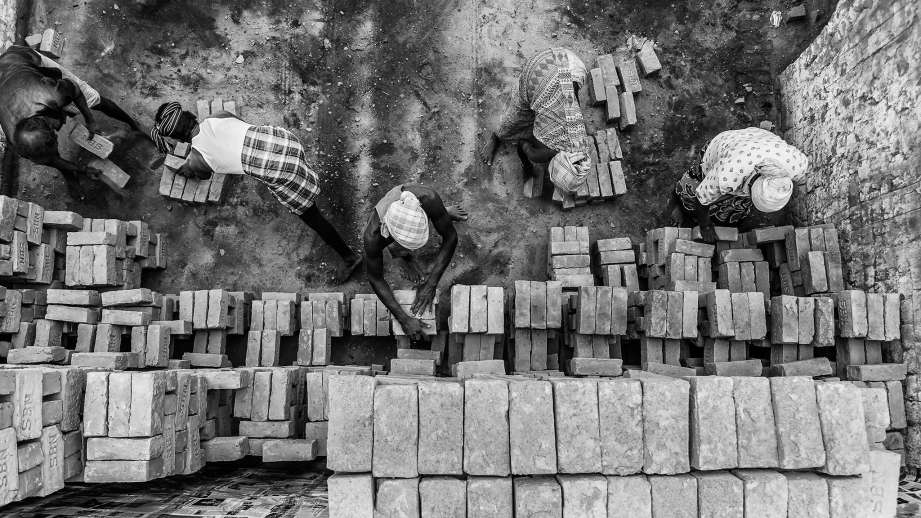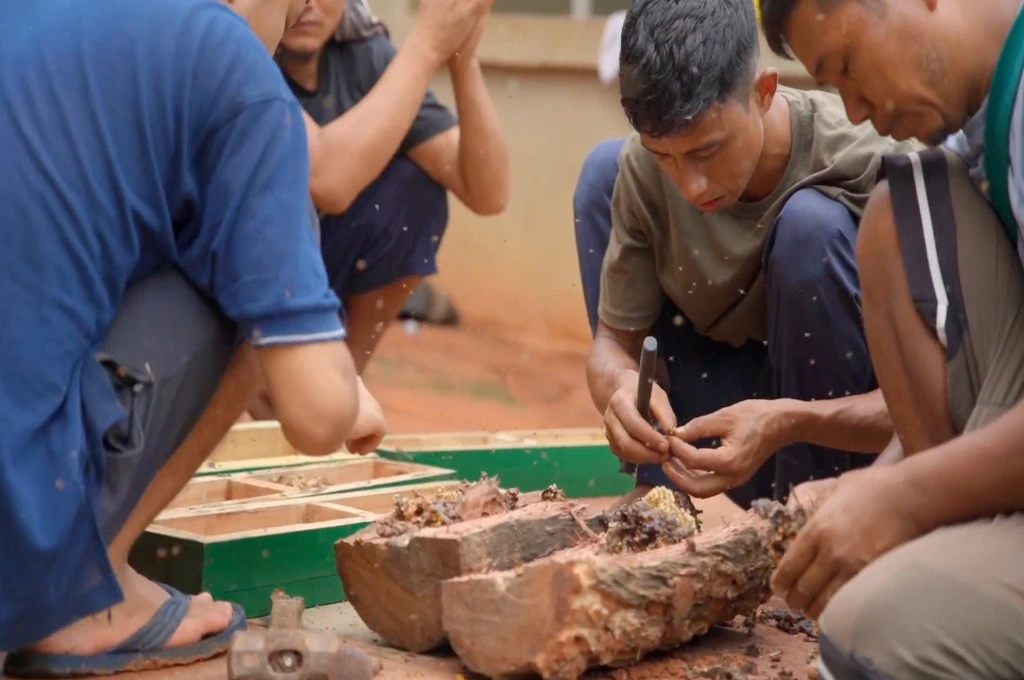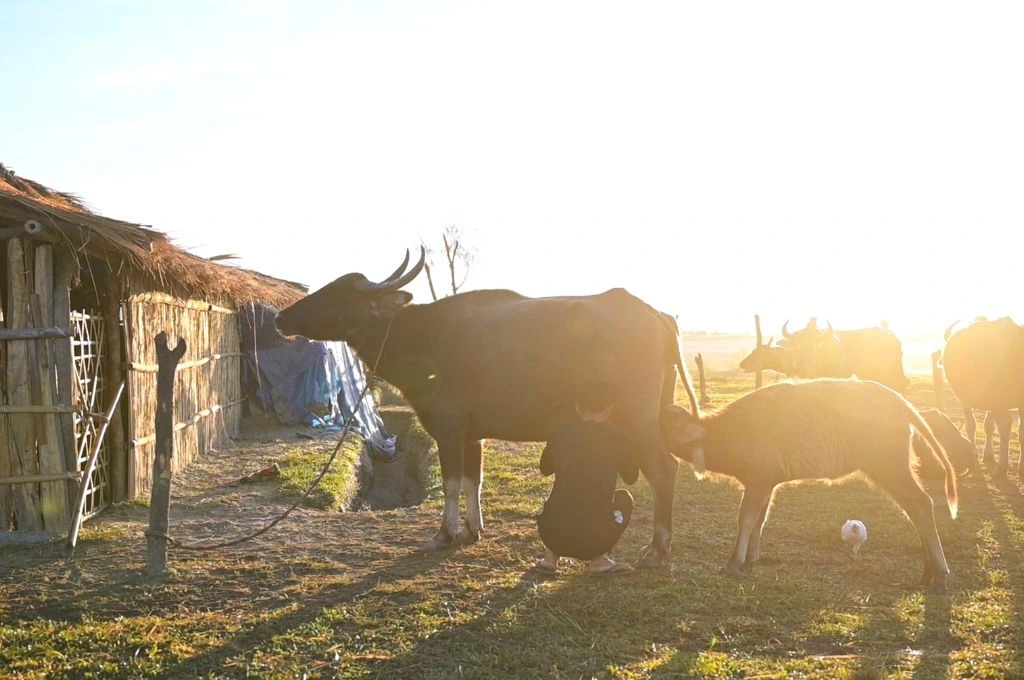India’s rural employment guarantee scheme is falling short in helping residents tide over the economic distress caused by the COVID-19 outbreak and the subsequent lockdown restrictions, data from Rajasthan suggest.
Nearly 43% households who took up work under the scheme in Dungarpur, a largely tribal district in southern Rajasthan, had completed more than 50 of their 100 days of work in the first four months of the current financial year, the scheme’s data shows.
This raises questions about families’ sustenance for the rest of the year. Stakeholders say they want the number of workdays offered under the scheme to be doubled to 200 days and the wage rates to be increased for this year.

Of the 44.3 million inter-state and intra-state migrant workers in India, about 800,000 come from Rajasthan, according to Census 2011. These 800,000 constitute 1.27% of the state’s population of 68.5 million.
The COVID-19 lockdown adversely affected the state as 46.26% of the state’s rural households, i.e. nearly 4.38 million households, have one or more family members who migrate for work. Most find work in the unorganised sector.
Related article: Getting construction workers their entitlements
Across India, the lockdown led to loss of livelihoods for migrant workers as well as local artisans, street vendors and agricultural labourers and for those whose income was based on minor forest produce.
It is estimated that nearly 1.3 million migrants returned to Rajasthan—India’s largest state—owing to job losses in cities during and after the COVID-19-induced lockdown in March and April. About 58,772 of these returned to Dungarpur, as per information given by district administration officials. Returnee migrants and informal workers in southern Rajasthan faced high income loss.

Soon after, the world’s largest public employment programme, the Mahatma Gandhi National Rural Employment Guarantee Scheme (MGNREGS), witnessed high demand for work. The scheme guarantees 100 days of employment in a financial year to adult members of rural households who have applied for employment. If employment is not given within 15 days of demand for work, the central government is liable to pay an unemployment allowance.
MGNREGS is the only way for many rural families to make ends meet.
Work under MGNREGS, which had come to a pause during March and April, resumed in the second half of April and has since been a major source of livelihood in rural areas. With looming uncertainty and no calls from their employers back in cities, MGNREGS is the only way for many rural families to make ends meet.
“My family is dependent on MGNREGS income this year,” said Lakshman Faleja who lives in a family of eight members in Dungarpur’s Khajuri village. “My wife and I have completed 100 days of work. We have been told that we cannot demand more work [under MGNREGS].”
Faleja and his wife hope to find work as agricultural labourers in and around their village during the rest of the kharif agricultural season (harvest in September-October). They do not know how they will earn a living through the rest of the year, he said.
Increased demand for work
In 2019-20, a total of 23.8 million (23,862,438) households cumulatively demanded MGNREGS work in Rajasthan over a 12-month period, according to the scheme’s employment data released by the Ministry of Rural Development.
This year, 14.3 million (14,324,401) households cumulatively demanded work in Rajasthan under MGNREGS over four months from April to July, according to data as of August 6. This is nearly 22% higher than the cumulative demand for work from 11.7 million (11,746,140) households in the same four-month period in 2019-20, the data shows.
The lockdown-driven cumulative demand for MGNREGS work in four months across the state this year is nearly 60% of the cumulative demand for work from the state from 23.8 million (23,862,438) households in the 12 months of the 2019-20 financial year, the data indicate. The maximum demand for work this year came from Bhilwara, Dungarpur and Ajmer districts, respectively.
Of the 6 million (6,023,027) households in the state that have undertaken MGNREGS work this financial year, 1.3 million (1,376,978) households, or about 21.6%, have completed more than 50 days of work, according to data as of August 6.
The cumulative demand for MGNREGS work in Rajasthan was down 68.35% in April 2020-21 compared to the same period last year; the entire country was under a strict lockdown in April following the COVID-19 outbreak. In the subsequent months, as lockdown restrictions eased, demand for work in the state increased by 23.98% in May, 57.86% in June and 86.65% in July compared to the respective months in 2019-20.
Over 40% Dungarpur households have completed 50 days of work
Nearly 70% of Dungarpur district’s 1.38 million population comes from tribal communities, according to Census 2011. The district’s hilly terrain leads to small landholdings, with a per capita land holding of 0.44 hectares. The people use agricultural produce, mainly maize, wheat and rice, for consumption. The men tend to migrate while women mostly take up work under MGNREGS.
A total of 832,818 people are registered under MGNREGS in Dungarpur, of which 587,550 are active workers. The district has 364,061 households with MGNREGS job cards, a work entitlement document. Of these, 329,359 are active, implying that at least one individual of the household has opted for MGNREGS work for at least one day in either the last three financial years or in the current financial year.
Job losses during the lockdown was pushing more men to opt for MGNREGS work in Dungarpur.
IndiaSpend spoke to MGNREGS workers, gram panchayat sachivs (village council secretaries), gram panchayat sarpanchs (village council heads), returnee migrant workers, community workers and stakeholders to understand the demand for work under MGNREGS in Dungarpur. We found that job losses during the lockdown was pushing more men to opt for MGNREGS work in Dungarpur. This increased the demand for work under the scheme.
As of August 6, 131,907 of the 306,207 households–or 43% households–who worked in MGNREGS in Dungarpur this year–have completed at least 50 days of work.
Hundreds of families completed upto 60-70 days of MGNREGS work in May and June itself, said Jeeva Lal (name changed), a sarpanch from Dovra block. “There is work available for perhaps another 30-40 more days. This will resume after the rains.”
After the lockdown, 100 days of MGNREGS work had been distributed between two persons per household, said Mohan Raut, a gram sabha member in Valota gram panchayat. “So, only 50 days of work was available per person.”
The splitting of 100 workdays among multiple members of the same household means households are completing their stipulated work in fewer days.
“My husband and I took up MGNREGS work in May,” said Rekha Parmaar of Asiyabao village. Her husband had lost his city job as a construction site worker during the lockdown. “Our work will get over soon. We want more work this year.”
Others, like Ashok Kharadi, a 24-year-old from Lehena village, left his village to get his city job in June. “I went to Ahmedabad to work in construction but had to return in 15 days. I did not get any work,” Kharadi told IndiaSpend. “If my wife and I can get 200 days of work under MGNREGS this year, then I can stay here in my village. There will be no need to go elsewhere in search of work.”
There is an urgent need to provide 100 additional days of work for each household in MGNREGS this year, said social activist Nikhil Dey, who works with Suchna evam Rojgar ka Adhikar Abhiyan and National Campaign for People’s Right to Information.
About 21%, who demanded work under MGNREGS in Rajasthan from April to June did not receive employment.
The demand for work is higher than recorded in the scheme’s management information system, say observers. For instance, about 1.9 million people, or about 21%, who demanded work under MGNREGS in Rajasthan from April to June did not receive employment, according to data analysed by the activist group People’s Action for Employment Guarantee.
The unmet demand for work is frustrating stakeholders in Dungarpur too. The head of the Asiyabao gram panchayat refused to accept the demand for work by a group of women in July, saying no additional work was available under MGNREGS, Manisha Faleja, a community worker from Bichiwara block in Dungarpur, told IndiaSpend.
Related article: A pandemic cannot justify child labour
The women’s demand for MGNREGS work, Faleja said, was accepted after they persistently visited the gram panchayat office for five consecutive days. “The women were allotted worksites at distant places in forest areas which they were unable to reach,” said Faleja.
IndiaSpend reached out to Hari Prasad Barjod, the block development officer for Bichiwara block, under which Asiyabao gram panchayat falls, to understand how officials are dealing with unmet demand for work. We will update this report when we receive a response.
The increased demand for work in May and June was recognised due to administrative pro-activeness and pressure, and people were given work, said Madhulika, a Dungarpur-based social activist who prefers to use her first name.
“Once that pressure eased in July, it became extremely difficult to get work,” she said, adding that gram panchayat officials cite reasons such as lack of sanctions for works and lack of financial resources to deny registration. “Gram panchayat officials stall or use delaying tactics [to avoid giving work]. If the demand is received, the government must provide work. Otherwise, it is liable to pay unemployment allowance.”

It is estimated that nearly 1.3 million migrants returned to Rajasthan—India’s largest state—owing to job losses in cities during and after the COVID-19-induced lockdown in March and April. | Picture courtesy: Flickr
Unsustainable wage rate
The central government revises the MGNREGS wage rate for each state every year based on the Consumer Price Index for Agricultural Labourers (CPI-AL).
In Rajasthan, wages under the rural employment guarantee scheme have increased by Rs 39 per day in the five years since 2016-17. There was no change in the wages for two financial years from 2017-18 to 2019-20; it increased by Rs 21 from Rs 199 per day in financial year 2019-20 to Rs 220 per day for financial 2020-21.
The district-level average MGNREGS wage rate paid in Dungarpur as of August 6 was Rs 167 per day; the actual MGNREGS wage is seldom the prescribed rate due to two main factors i.e. non-revision of Schedule of Rates (SoRs), which lists productivity norms, and irregular supervision of MGNREGS sites.
“We do not know how the site supervisor fills the details of the work given to us under MGNREGS,” said Dina Bhagora, a MGNREGS worker from Asiyabao village. “Our wages are based on the measurement of work as estimated by the site supervisor. The junior engineer rarely visits the site.”
The wage in Dungarpur is lower than the minimum MGNREGS wage rate of Rs 220 in Rajasthan for 2020-21.
The wage in Dungarpur is lower than the minimum MGNREGS wage rate of Rs 220 in Rajasthan for 2020-21, and is also lower than the market remuneration, said Bhaneswar Parmaar, a community worker in the district’s Dovra block.
At the actual rate, the earnings for a MGNREGS worker in Dungarpur for 100 days of work will be upto Rs 16,700 for this year. This is lower than the Rs 375 per day national minimum wage as recommended in 2019 by an expert committee led by economist Anoop Satpathy; the committee stipulated a minimum remuneration of Rs 375 per day, or Rs 9,750 per month, irrespective of sectors, skills, occupations and rural-urban locations.
“Many people who have completed more than 50 days of work in MGNREGS would like to continue the work but they get paid half the amount they could otherwise earn in urban areas,” said Parmaar. “In spite of heavy demand for MGNREGS work, people want to go to cities as it is difficult for them to sustain due to the low wages.”
Circumstances arising out of the COVID-19 outbreak too are affecting workers’ earnings under the scheme. The Act seeks to maintain a 60:40 ratio of labour to materials. The lockdown and restrictions post-lockdown have pushed up raw material and transportation costs, said Jeeva Lal, the sarpanch from Dungarpur.
“It is becoming difficult for gram panchayats to implement works in the predetermined budget,” said Lal. “More money is being spent to procure material, and so the wages are declining. It is important to maintain the prices of raw materials and increase the budget for labour.”
“MGNREGS wages are lower than the statutory minimum wage in more than 18 states, including in Rajasthan,” Dey, the social activist, said. “Minimum wages should not be lower than Rs 375 per day anywhere in the country.”
The NREGA Sangharsh Morcha (NSM), a network that works for the rights of MGNREGS workers, has sought that workers be paid at the rate of Rs 18,000 per month, in line with the Seventh Pay Commission guidelines for government workers.
Need to improve local planning
Gram sabhas (village assemblies comprising all adult members of the village) recommend the works that are to be undertaken under MGNREGS, even as Panchayati Raj Institutions (PRIs, or local self-government institutions) are responsible for the planning, implementation and monitoring of these works, according to the MGNREG Act.
“Most times, panchayats do not consider the action plans formed by PESA gram sabhas,” said Maan Singh, leader of Vagad Mazdoor Kisan Sangathan, a group that works for the rights of farmers and workers in Dungarpur. PESA refers to the Panchayat Extension to Schedule Areas Act, and Singh is referring to gram sabhas in tribal villages.
Panchayats’ disregard of local action plans while making decisions gives rise to other complications. For instance, when MGNREGS work allocation started in the second half of April after the lockdown, people were seeking work, but had to wait for several days because of less sanctioned work, said Parmaar, the community worker from Dovra.
“Insufficient understanding of worksite planning and limited movement due to lockdown slowed down the sanctioning of works in MGNREGS.”
The uneven representation of villages’ needs and a delay in approval of plan proposals resulted in fewer, but overstaffed, work sites.
The uneven representation of villages’ needs and a delay in approval of plan proposals resulted in fewer, but overstaffed, work sites.
“More than 100 people were working to build a check dam in Upla Fala village of Asiyabao panchayat in June,” Asiyabao resident Lal Shankar told IndiaSpend. “It was difficult to meet social distancing criteria.”
In order to identify more works across villages and promote inclusive planning, “there is a need to focus on large community works that will be able to absorb more workers,” said Madhulika, the social activist. “This should be done by integrating works recommended by all the gram sabhas in the panchayats.”
The focus currently is on individual works. For instance, in Dungarpur district, 82% of the works undertaken in the four months of 2020-21 are individual works such as construction of houses under PM Awas Yojana, building toilets and so on.
Instead of individual works under MGNREGS, there is a need to provide community infrastructure work across all villages to meet the increasing demand for work, say observers.
If gram sabhas cannot be conducted due to COVID-19 caution, then gram panchayats can engage with smaller groups, such as women’s groups, self-help groups and community-based organisations, to identify works, said Sonali Srivastava, an expert in decentralised governance and founder of Anode Governance Lab.
“Different groups can submit citizen charters about work required to be done under MGNREGS to the panchayat. This process can be formalised,” Srivastava told IndiaSpend. “The panchayats can enlist such works to form a large shelf of work, which they can choose from depending upon the labour budget. The shelf of work should emerge from people.”
This article was originally published on IndiaSpend, a data-driven, public-interest journalism nonprofit.





